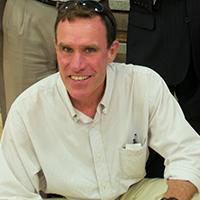 Ernesto Burden is Vice President Digital for Newspapers of New England (NNE). He’s been a group publisher at PennWell, vice president of digital media for The Telegraph and NH.com and related sites, as well as digital media director for the Rutland Herald and Times Argus newspapers in Vermont, online editor for The Telegraph and NH.com, and a print editor and reporter with daily and weekly newspapers. He is also a writer, runner, musician, and an avid student of the technology, literature, language and theology. He lives with his family in New Hampshire.
Ernesto Burden is Vice President Digital for Newspapers of New England (NNE). He’s been a group publisher at PennWell, vice president of digital media for The Telegraph and NH.com and related sites, as well as digital media director for the Rutland Herald and Times Argus newspapers in Vermont, online editor for The Telegraph and NH.com, and a print editor and reporter with daily and weekly newspapers. He is also a writer, runner, musician, and an avid student of the technology, literature, language and theology. He lives with his family in New Hampshire.
Ernesto Burden
Roger Carroll
 Roger Carroll started his journalism career in local radio, where he did occasional work for CBS and ABC. His long newspaper career includes stints as the editor of the Eagle Times in Claremont, and as Editorial Page Editor and Executive Editor of The Telegraph of Nashua. He is currently Managing Editor of the Laconia Daily Sun. He was named the 2014 Editorial Writer of the Year by the New Hampshire Press Association and won the award for Best Commentary writing in 2015 from the New England Newspaper and Press Association. All of that happened after he came to terms with the fact that he was never going to realize his childhood dream of pitching for the Boston Red Sox.
Roger Carroll started his journalism career in local radio, where he did occasional work for CBS and ABC. His long newspaper career includes stints as the editor of the Eagle Times in Claremont, and as Editorial Page Editor and Executive Editor of The Telegraph of Nashua. He is currently Managing Editor of the Laconia Daily Sun. He was named the 2014 Editorial Writer of the Year by the New Hampshire Press Association and won the award for Best Commentary writing in 2015 from the New England Newspaper and Press Association. All of that happened after he came to terms with the fact that he was never going to realize his childhood dream of pitching for the Boston Red Sox.
Elizabeth Casey
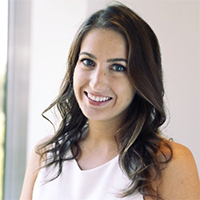 Elizabeth Casey is a digital media professional responsible for developing strategic publisher partnerships focused on driving revenue growth for partners through Teads’ solutions and services. Elizabeth is Director of Business Development at Teads, where she manages a talented team that heads publisher development in the US. Dedicated to building strong partnerships for media businesses in dynamic markets, Elizabeth has multi-platform experience at large consumer brands leading digital media business development, monetization and strategy initiatives. Prior to joining Teads, Liz held programmatic strategy & operations positions at Time Inc. and NBCUniversal focused on advertising across video, mobile and desktop platforms. From her position in adtech, Elizabeth brings her previous publisher-side experience developing business strategies to launch and scale new revenue models through strategic partnerships, to now help other publishers by cultivating relationships and providing innovative solutions.
Elizabeth Casey is a digital media professional responsible for developing strategic publisher partnerships focused on driving revenue growth for partners through Teads’ solutions and services. Elizabeth is Director of Business Development at Teads, where she manages a talented team that heads publisher development in the US. Dedicated to building strong partnerships for media businesses in dynamic markets, Elizabeth has multi-platform experience at large consumer brands leading digital media business development, monetization and strategy initiatives. Prior to joining Teads, Liz held programmatic strategy & operations positions at Time Inc. and NBCUniversal focused on advertising across video, mobile and desktop platforms. From her position in adtech, Elizabeth brings her previous publisher-side experience developing business strategies to launch and scale new revenue models through strategic partnerships, to now help other publishers by cultivating relationships and providing innovative solutions.
Bill Densmore
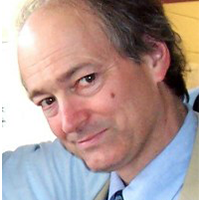 Bill Densmore is executive director of the Information Trust Exchange Governing Association. He is a Donald W. Reynolds Journalism Institute (RJI) fellow and author of its white paper, “From Persona to Payment: A Status Reprot on the News Ecosystem, and a Challenge to Create the Next One.” (2015). A career journalist, publisher and tech entrepreneur, Densmore has been an editor/writer for The Associated Press in Boston, Chicago and San Francisco and for trade publications in business, law, insurance and information-technology in Boston, Chicago and New York. He co-owned and published The Advocate newsweeklies for the Berkshires/southwestern Vermont, from 1983-1992. Densmore founded Amherst, Mass.-based Clickshare Service Corp. , which provides user registration, authentication, content access control and transaction services to Internet web content sites and publishers. He is co-founder of Taxonometrics Inc., a New York-based company incubating a news- and information-personalization service called YourStream®. He’s a founding member and director of Journalism That Matters and also served eight years on the board of the New England Newspaper & Press Association and four years on the board of Shires Media Partnership, Inc. Densmore also served as director/editor of the Media Giraffe Project at the University of Massachusetts-Amherst from 2005-2008. It was an effort to find and spotlight individuals making sustainable, innovative use of media (old and new) to foster participatory democracy and community. He is a member of the editorial advisory board of The Berkshire Eagle. Densmore holds a B.A. from the University of Massachusetts-Amherst in environmental policy and communications. He’s based in Williamstown, Mass.
Bill Densmore is executive director of the Information Trust Exchange Governing Association. He is a Donald W. Reynolds Journalism Institute (RJI) fellow and author of its white paper, “From Persona to Payment: A Status Reprot on the News Ecosystem, and a Challenge to Create the Next One.” (2015). A career journalist, publisher and tech entrepreneur, Densmore has been an editor/writer for The Associated Press in Boston, Chicago and San Francisco and for trade publications in business, law, insurance and information-technology in Boston, Chicago and New York. He co-owned and published The Advocate newsweeklies for the Berkshires/southwestern Vermont, from 1983-1992. Densmore founded Amherst, Mass.-based Clickshare Service Corp. , which provides user registration, authentication, content access control and transaction services to Internet web content sites and publishers. He is co-founder of Taxonometrics Inc., a New York-based company incubating a news- and information-personalization service called YourStream®. He’s a founding member and director of Journalism That Matters and also served eight years on the board of the New England Newspaper & Press Association and four years on the board of Shires Media Partnership, Inc. Densmore also served as director/editor of the Media Giraffe Project at the University of Massachusetts-Amherst from 2005-2008. It was an effort to find and spotlight individuals making sustainable, innovative use of media (old and new) to foster participatory democracy and community. He is a member of the editorial advisory board of The Berkshire Eagle. Densmore holds a B.A. from the University of Massachusetts-Amherst in environmental policy and communications. He’s based in Williamstown, Mass.
Dwayne Desaulniers
 Dwayne Desaulniers currently serves as the regional director for The Associated Press in the northeast USA. In that role, Desaulniers works closely with AP members and commercial clients to improve the funding and operations of the AP news cooperative. Desaulniers has served in a variety of editorial and business roles in the news industry in Canada and the US for the past 30-years.
Dwayne Desaulniers currently serves as the regional director for The Associated Press in the northeast USA. In that role, Desaulniers works closely with AP members and commercial clients to improve the funding and operations of the AP news cooperative. Desaulniers has served in a variety of editorial and business roles in the news industry in Canada and the US for the past 30-years.
Thomas Farragher
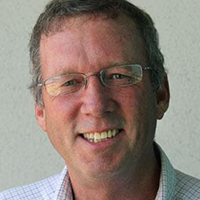 Thomas Farragher, a journalist for 40 years, is a Globe columnist and associate editor and the former editor of the Boston Globe Spotlight Team, the newspaper’s award-winning investigative unit. He shared the 2003 Pulitzer Prize for public service for coverage of the clergy sexual abuse crisis.
Thomas Farragher, a journalist for 40 years, is a Globe columnist and associate editor and the former editor of the Boston Globe Spotlight Team, the newspaper’s award-winning investigative unit. He shared the 2003 Pulitzer Prize for public service for coverage of the clergy sexual abuse crisis.
Farragher and his Spotlight Team colleagues were finalists for the 2015 Pulitzer Prize for public service for the 2014 Globe series, “Shadow Campus,’’ which uncovered rampant overcrowded and unsafe living conditions throughout the university neighborhoods of Boston.
He joined the Globe staff in 1997 as a member of its Metro staff. He briefly worked as a Spotlight Team member before spending six years producing special projects for the newspaper. He was named a Globe Metro columnist in 2014.
In 1997, he was co-winner of the National Press Club’s top award for journalists who display excellence and versatility in covering Washington from a regional perspective, and the 1999 National Headliner Award for spot news coverage of a mass murder at Connecticut’s lottery headquarters.
He is the co-author of “Betrayal: The Crisis in the Catholic Church,” based on the Globe’s reporting about clergy sexual abuse.
For their coverage of that scandal, Farragher and his Globe colleagues also were awarded the Associated Press Managing Editor’s Freedom of Information Award, the Goldsmith Prize for investigative reporting, the George Polk Award for national reporting, the Selden Ring Award for investigative reporting, the Worth Bingham Award for investigative reporting, the Investigative Reporters and Editor’s Gold Medal, the Taylor Family Award for Fairness in Newspapers (administered by the Nieman Foundation), and the New York Times
Company’s Punch Sulzberger Award.
In 2004, Farragher shared the American Society of Newspaper Editors top award for deadline news reporting for coverage of the Rhode Island nightclub fire that killed 100 people in February 2003. He was awarded the Jesse Laventhol Prize for deadline news reporting by a team.
In 2009, Farragher shared two national awards from the Society of American Business Editors and Writers. The Best in Business Awards honored the Spotlight Team’s “Partners Effect” series, which examined Massachusetts spiraling healthcare costs.
He and his Spotlight Team colleagues were awarded the George Polk Award and a first-place National Headliner Award for public service in 2012 for a Globe series on an unusually high acquittal rate in drunk driving cases tried before judges instead of juries.
In 2015, Farragher was inducted into the Academy of New England Journalists when he was named a recipient of the Yankee Quill Award, the highest individual honor New England journalists. The academy cited Farragher for his “strong commitment to the watchdog principles of journalism, (his) leadership role in mentoring aspiring and young journalists, and (his) fierce dedication to the First Amendment.’’
In 2017, he received an honorary doctorate degree from his alma mater, the University of Rhode Island, for his “life’s work and accomplishments.’’ Farragher began his career as a reporter and editor at two small Massachusetts dailies, the Gardner News and the Clinton Daily Item. He later covered the Connecticut Legislature for The Day newspaper of New London.
In 1988, he joined the staff of the San Jose (Calif.) Mercury News, where he covered city hall and the state capitol in Sacramento before becoming the newspaper’s Washington correspondent in l994.
He is also the recipient of several regional writing awards.
A native of Clinton, Mass., Farragher received his journalism degree from URI in 1977. He and his wife, Joan, are the parents of three children, Brendan, Colleen, and Adam. They live in Scituate, Mass.
Diana Goode
 Diana has been with the Council since May 2018. She brings 25 years of leadership experience and passion in the nonprofit sector to the important work of raising awareness about problem and responsible gambling. She currently serves as Secretary of the National Council on Problem Gambling’s Affiliates Committee.
Diana has been with the Council since May 2018. She brings 25 years of leadership experience and passion in the nonprofit sector to the important work of raising awareness about problem and responsible gambling. She currently serves as Secretary of the National Council on Problem Gambling’s Affiliates Committee.
Diana previously held executive-level positions with Foodshare, Gifts of Love and Operation Fuel. Community participation and involvement is key to Diana; she has previously served as a board member for the Community Farm of Simsbury, Gackstatter Family Foundation, Avon Land Trust, and Farmington River Watershed.
Peter Goonan
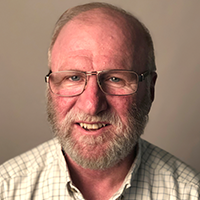 Peter Goonan has been a journalist with The Republican, a daily newspaper in Springfield, Mass., since 1984, and also writes for MassLive.com.
Peter Goonan has been a journalist with The Republican, a daily newspaper in Springfield, Mass., since 1984, and also writes for MassLive.com.
His beat includes coverage of the MGM Springfield casino located in Springfield, from its inception to its completion and ongoing operations. He has also covered related gaming issues and some meetings of the Massachusetts Gaming Commission. He is also the Springfield City Hall beat reporter and covers local politics and general assignments.
He is 1979 graduate of the University of Massachusetts in Amherst, with a Bachelor of Arts degree in Journalism.
He lives in Chicopee, Mass., with his wife Lisa, and has two adult sons. He is a long-term member and current vice-president
Brian Hallenbeck
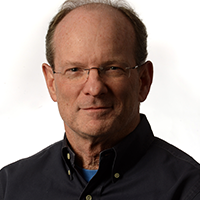 As a business writer for The Day of New London, Conn., Brian Hallenbeck has covered gaming since 2009, a beat dominated by southeastern Connecticut’s two casinos, Foxwoods and Mohegan Sun, and the sovereign Indian tribes that respectively own and operate them, the Mashantucket Pequots and the Mohegans. Combined, the casinos are among the state’s largest employers and taxpayers. During his long newspaper career, Brian also has covered sports, written features and been an editor. He grew up in Enfield, Conn., and graduated from Northwestern’s Medill School of Journalism.
As a business writer for The Day of New London, Conn., Brian Hallenbeck has covered gaming since 2009, a beat dominated by southeastern Connecticut’s two casinos, Foxwoods and Mohegan Sun, and the sovereign Indian tribes that respectively own and operate them, the Mashantucket Pequots and the Mohegans. Combined, the casinos are among the state’s largest employers and taxpayers. During his long newspaper career, Brian also has covered sports, written features and been an editor. He grew up in Enfield, Conn., and graduated from Northwestern’s Medill School of Journalism.

